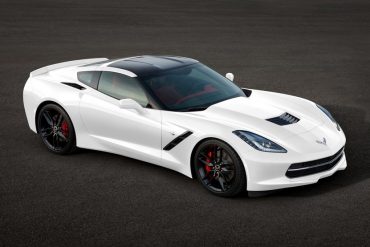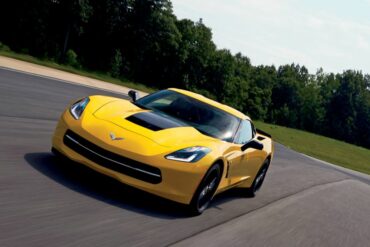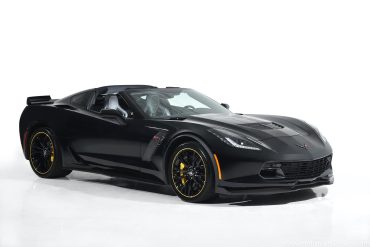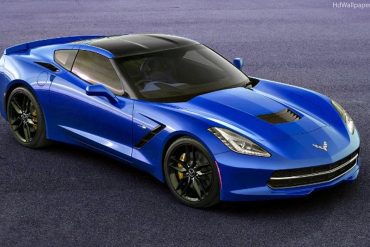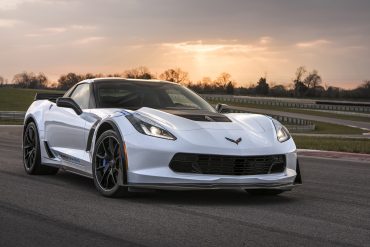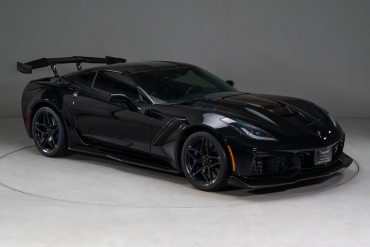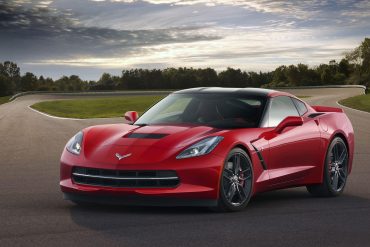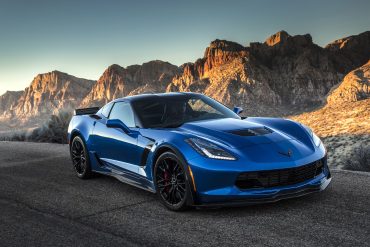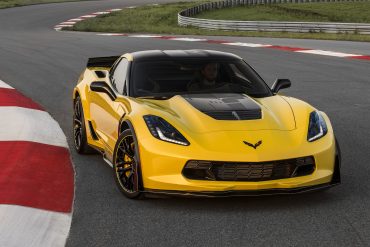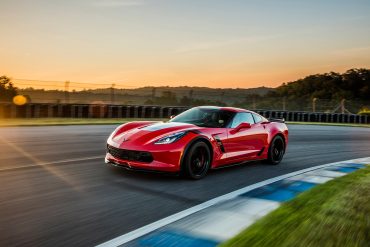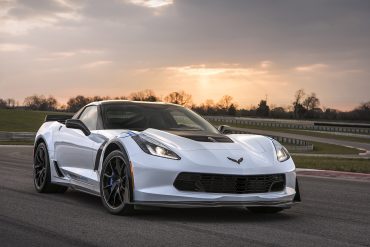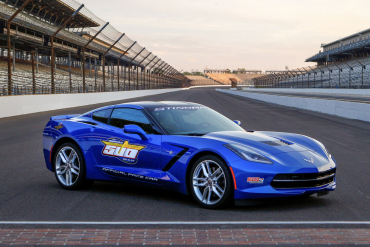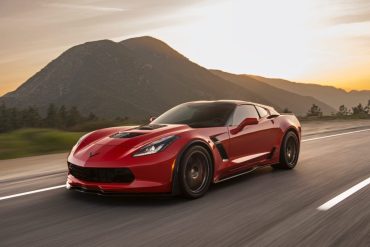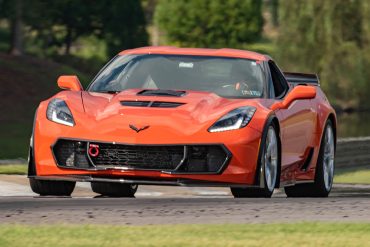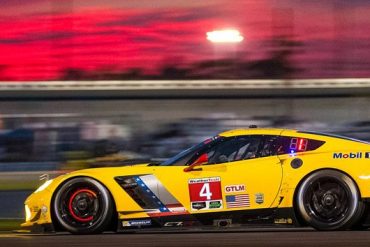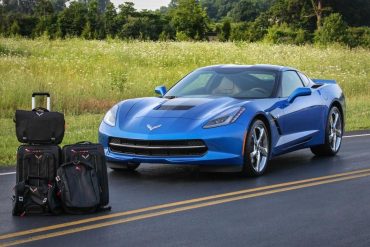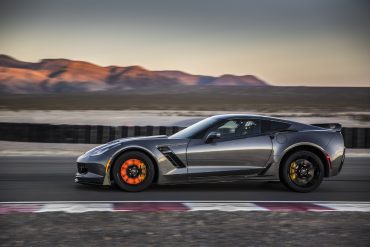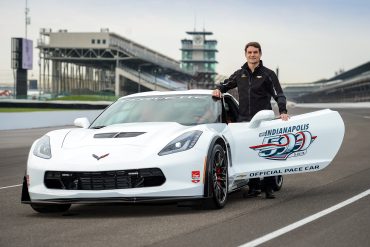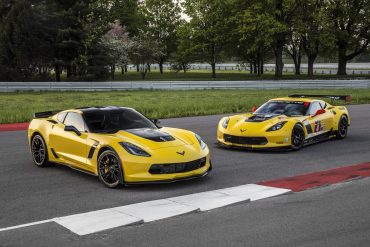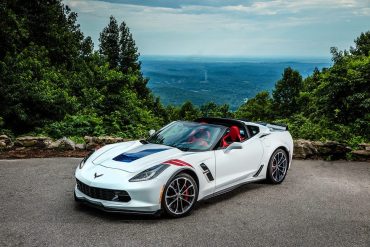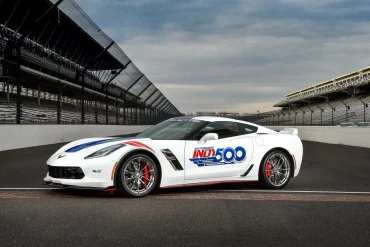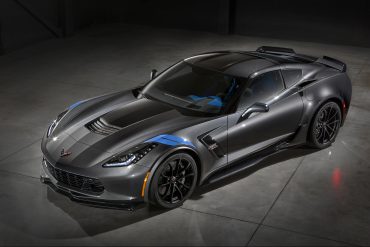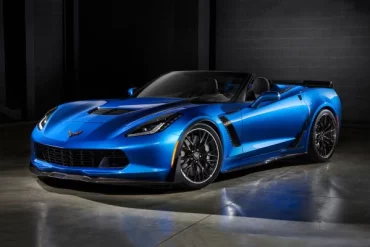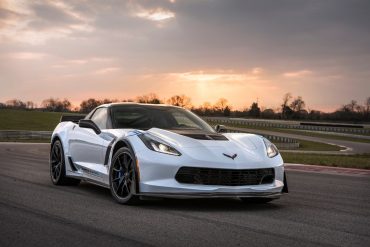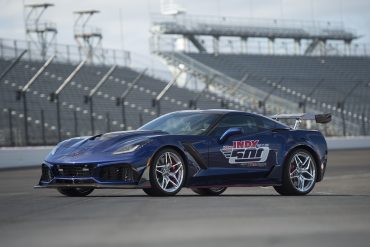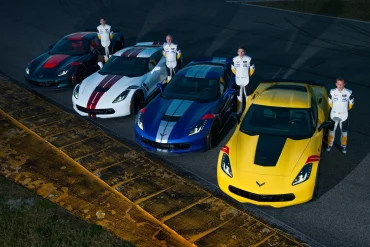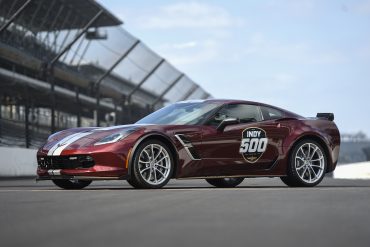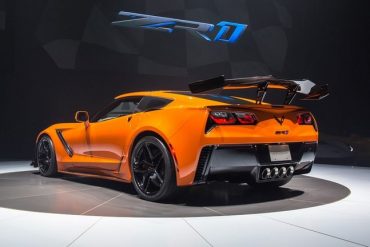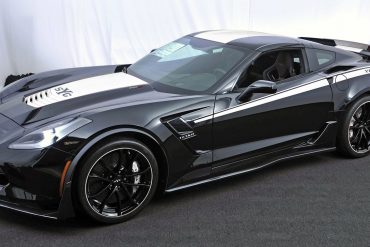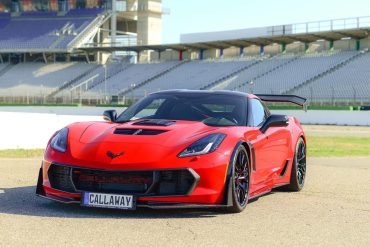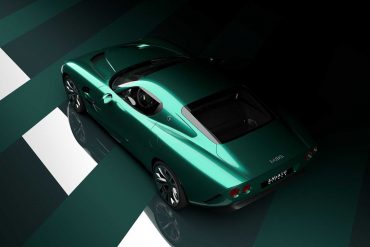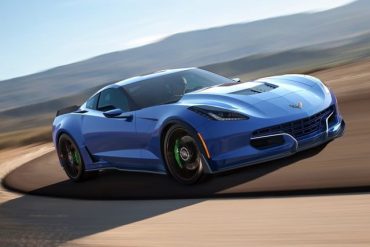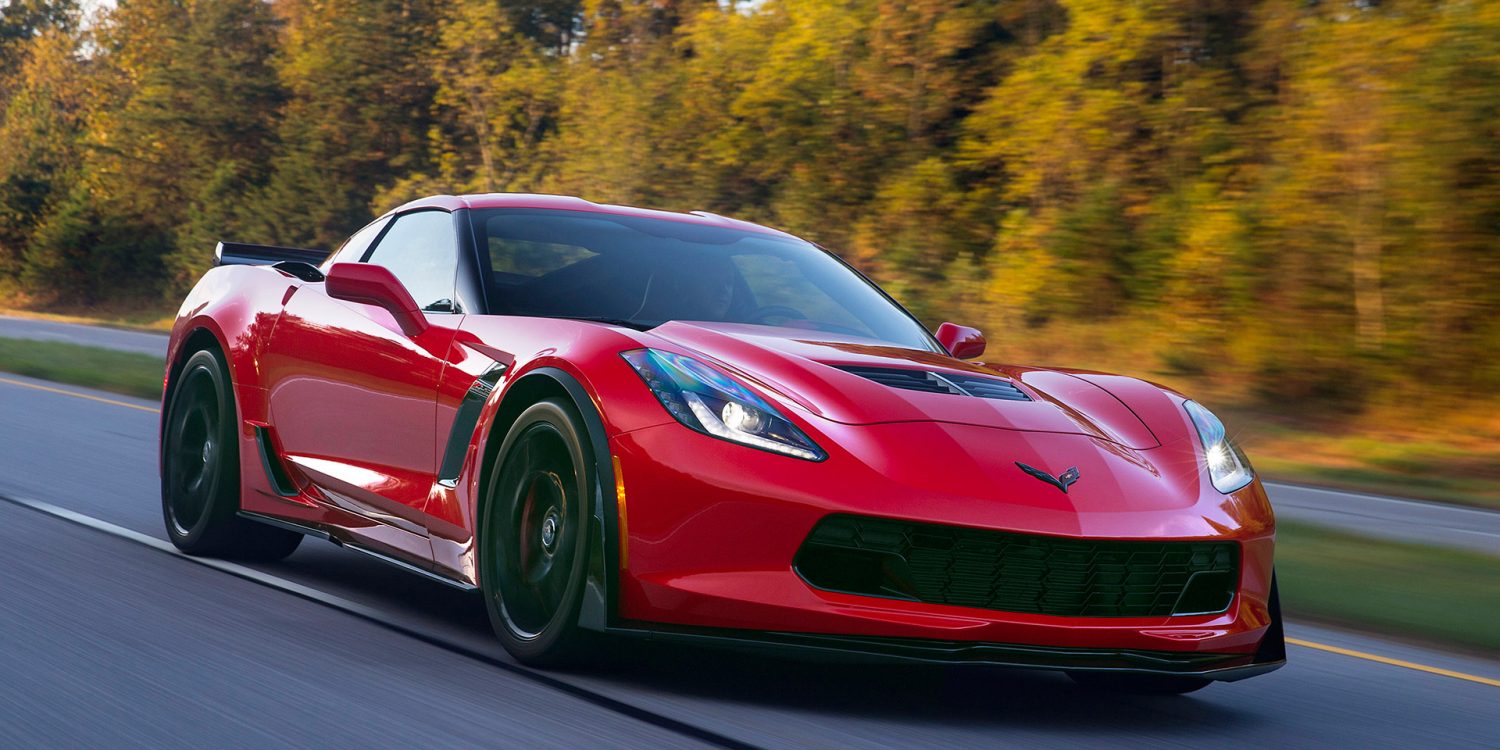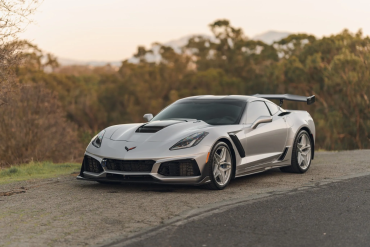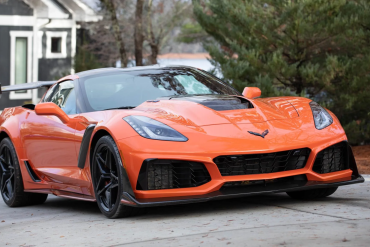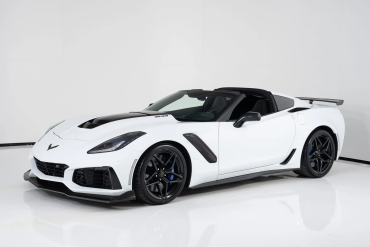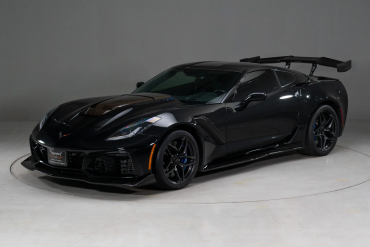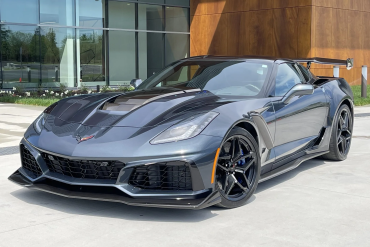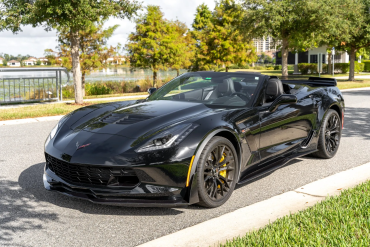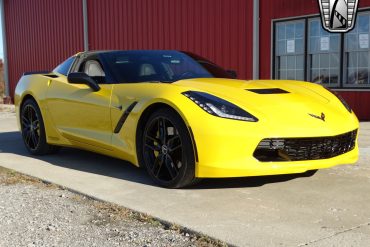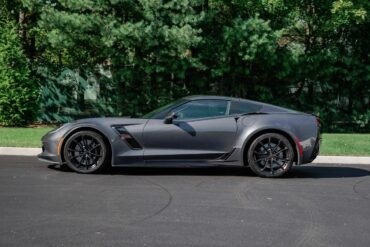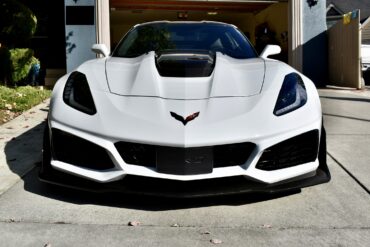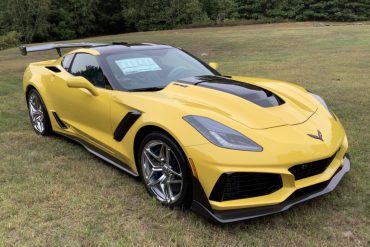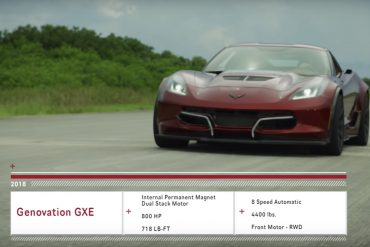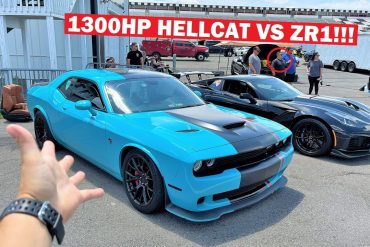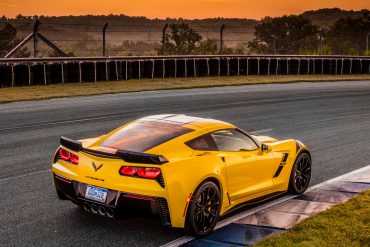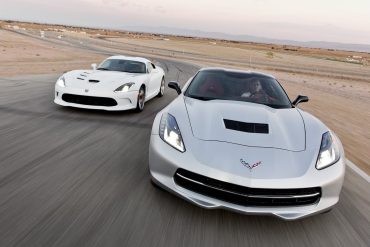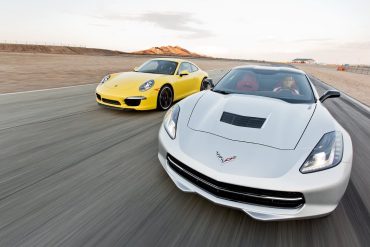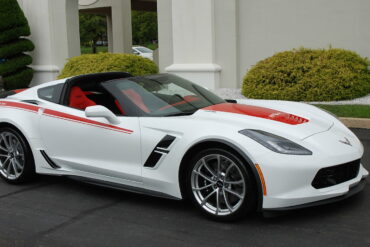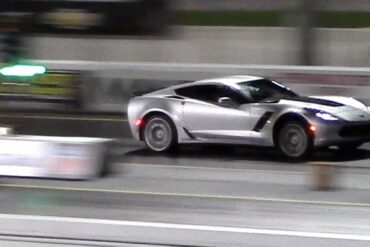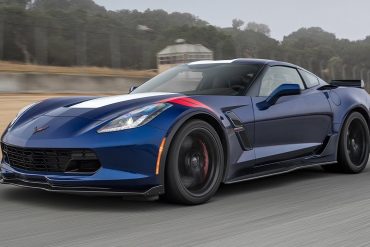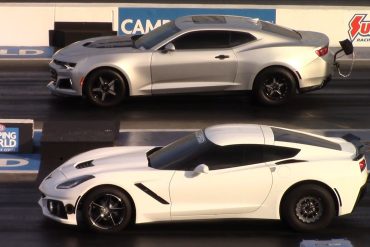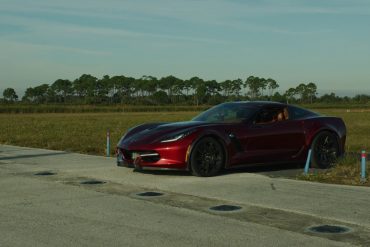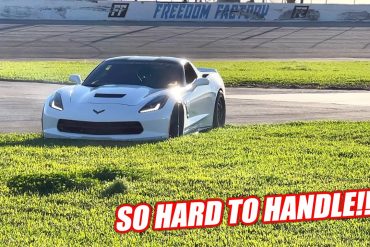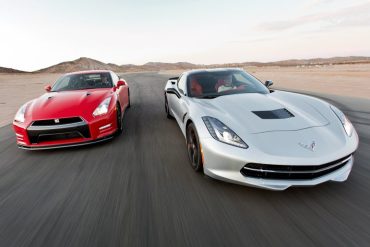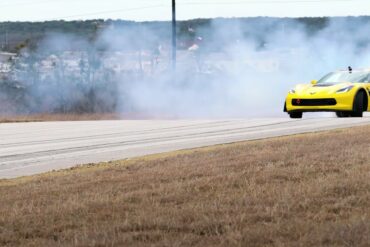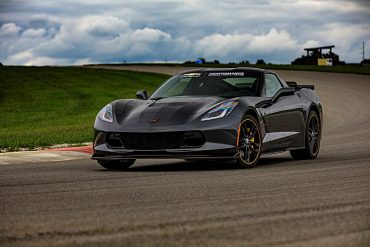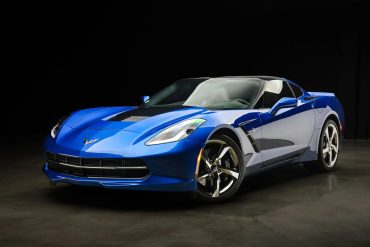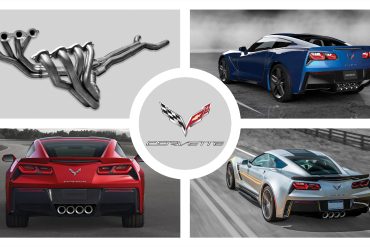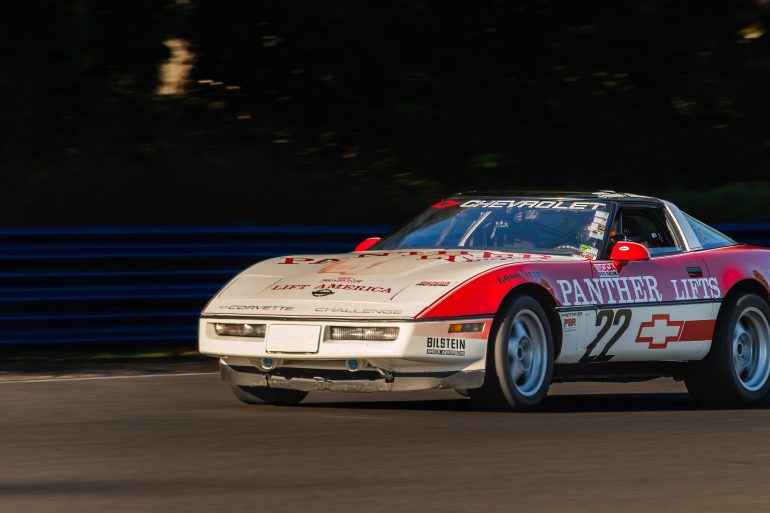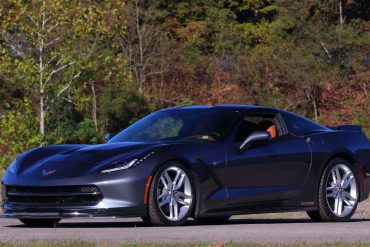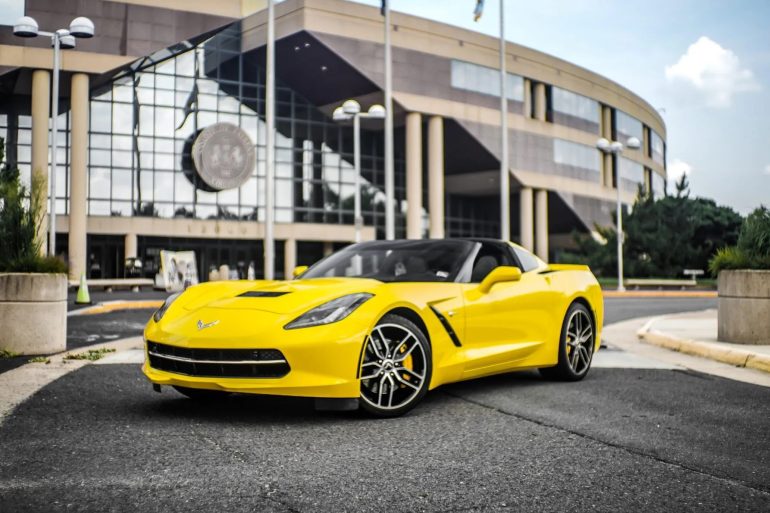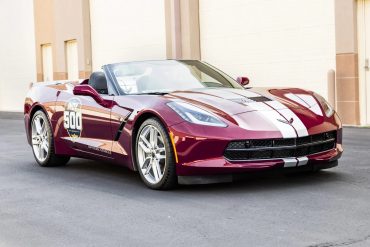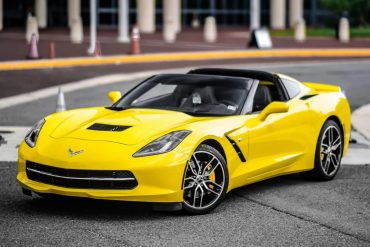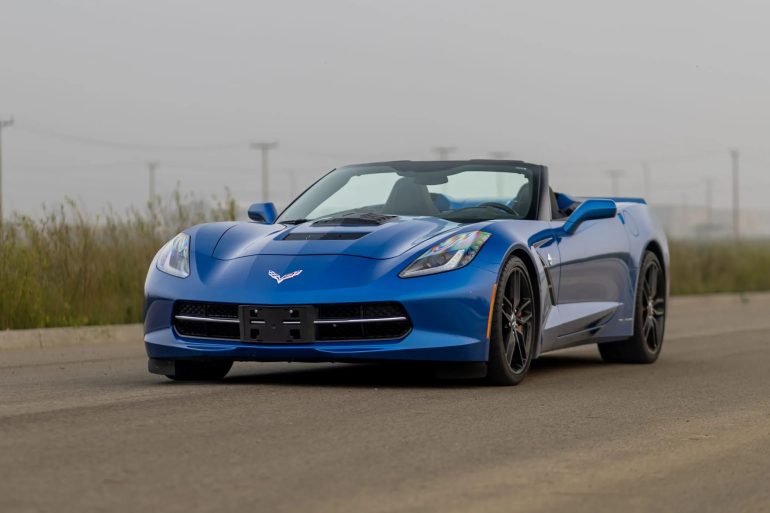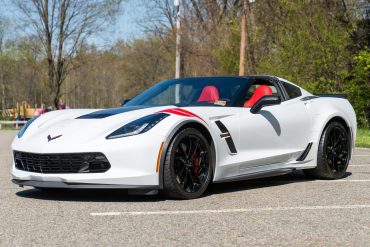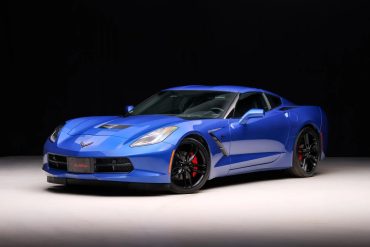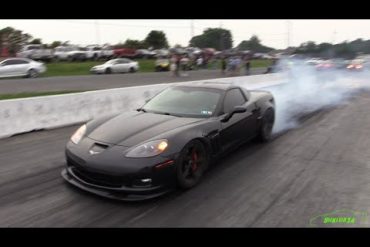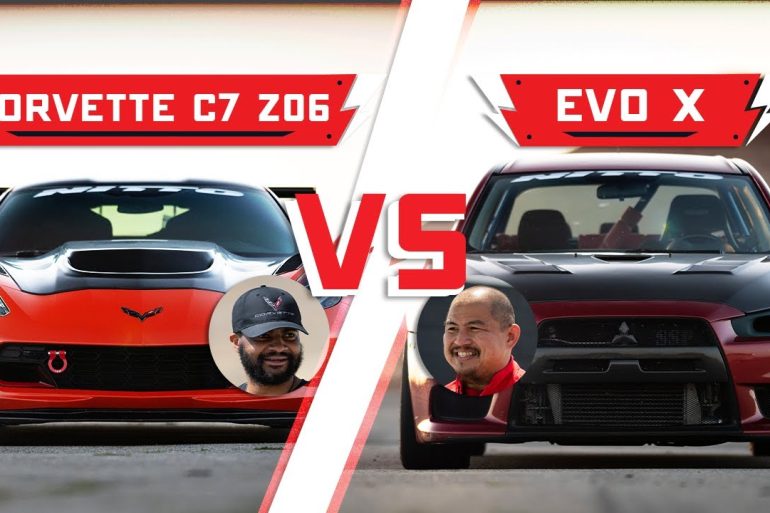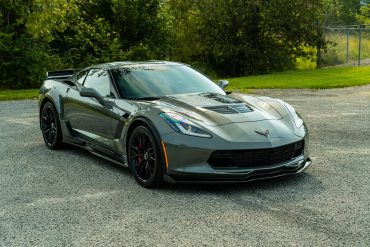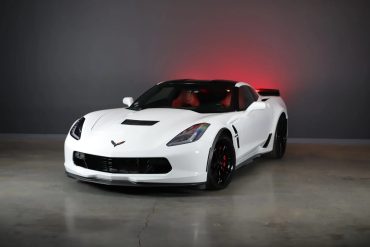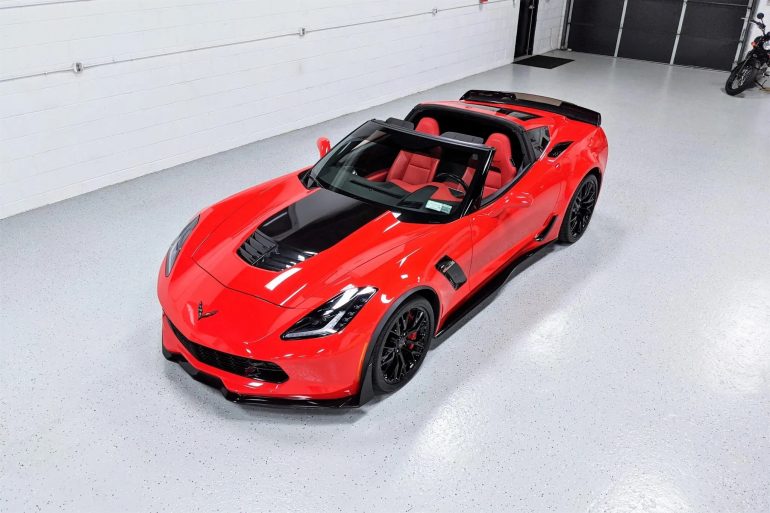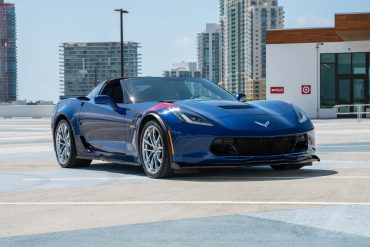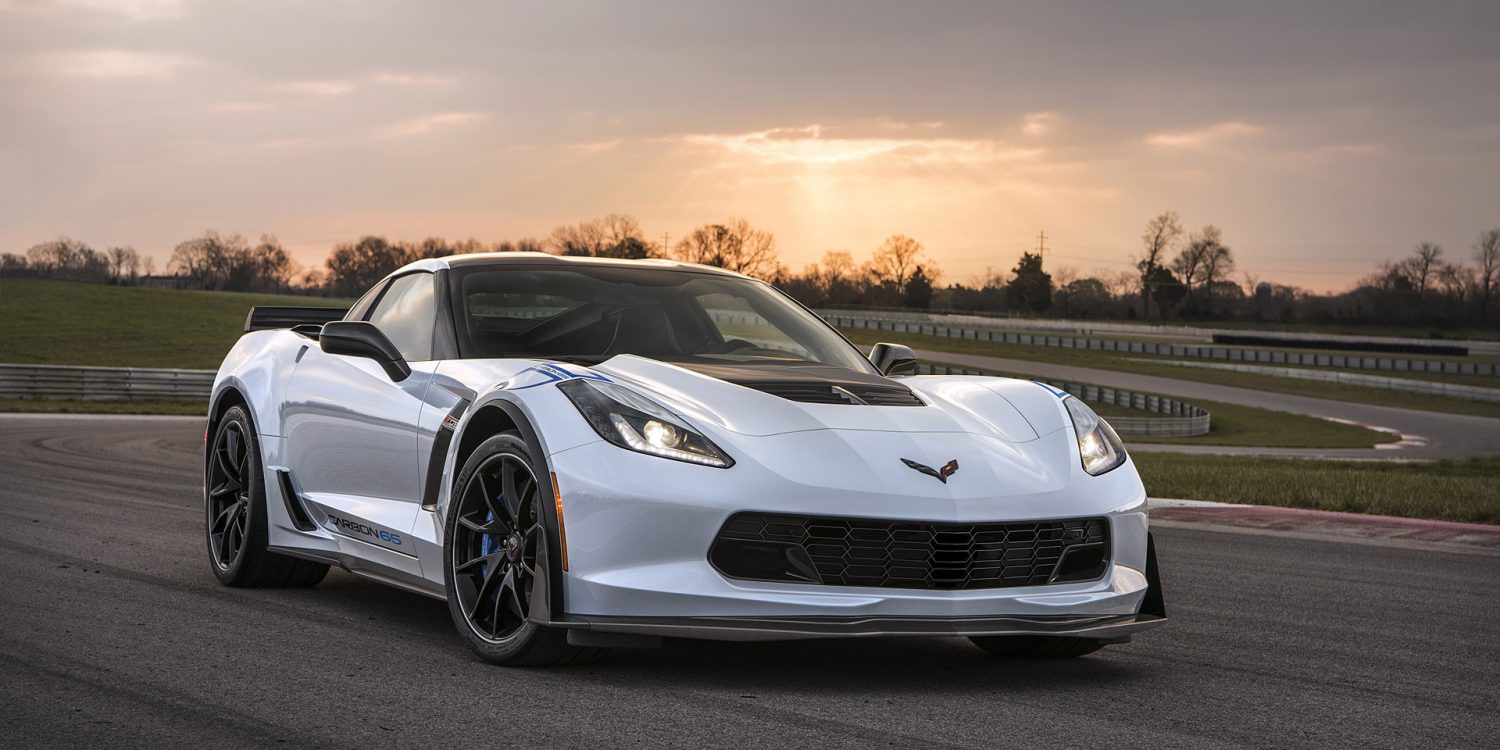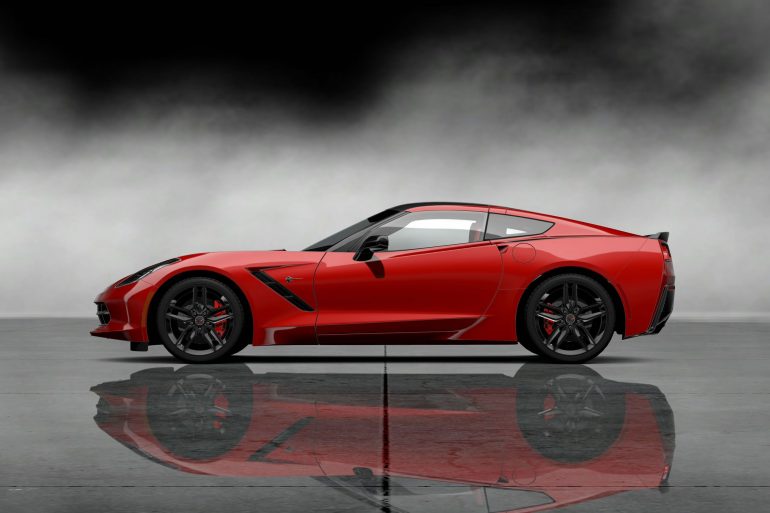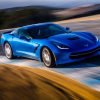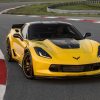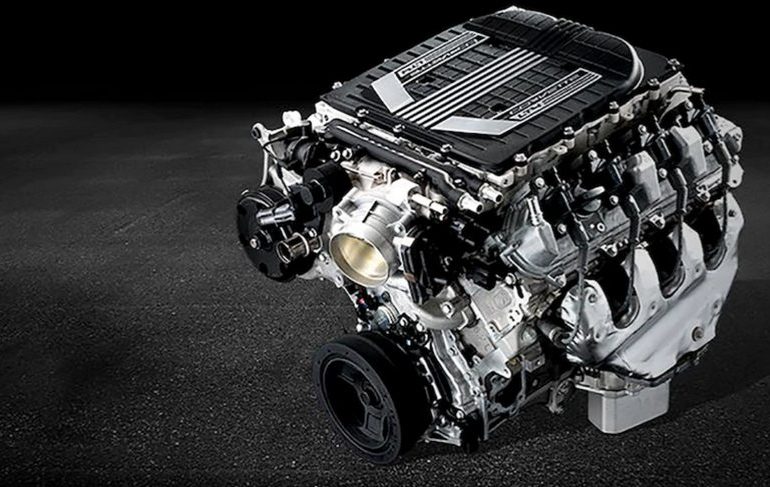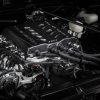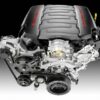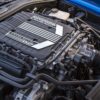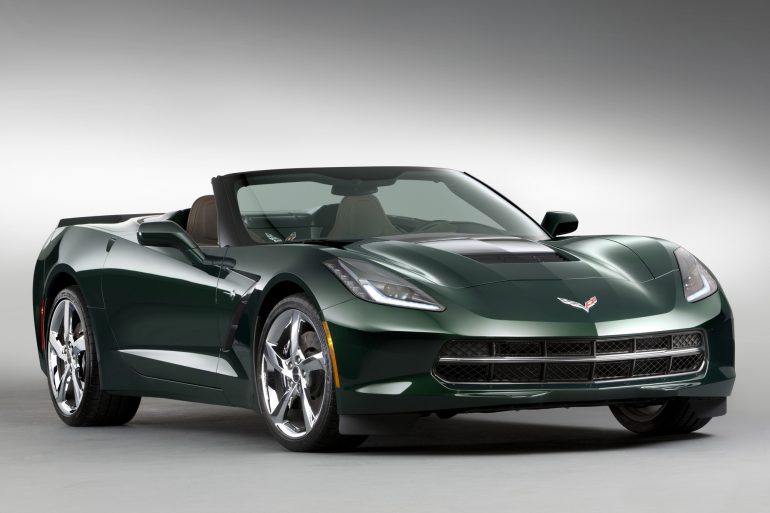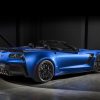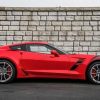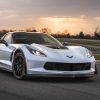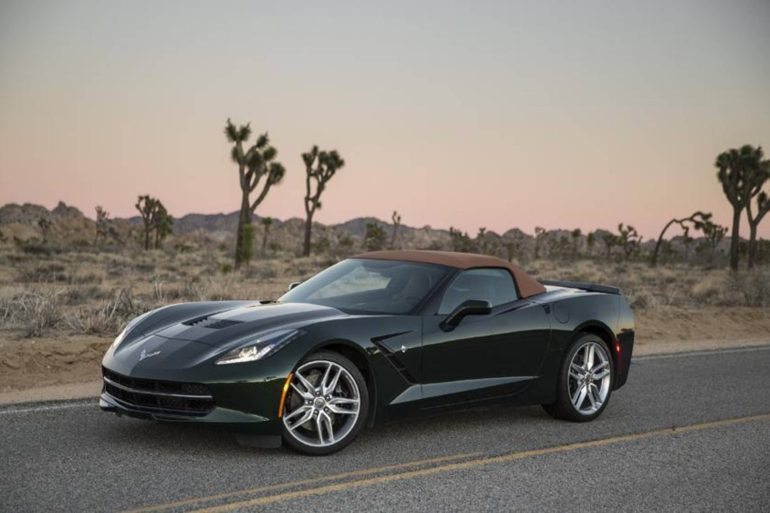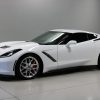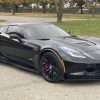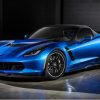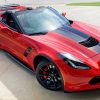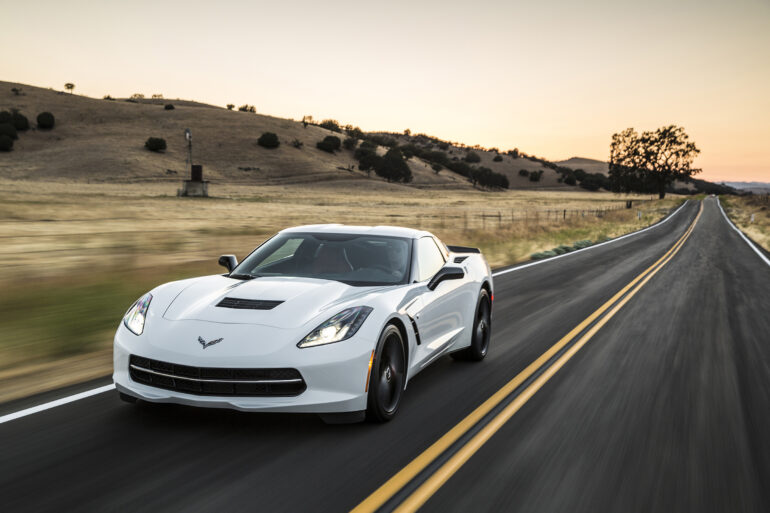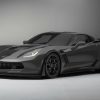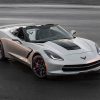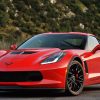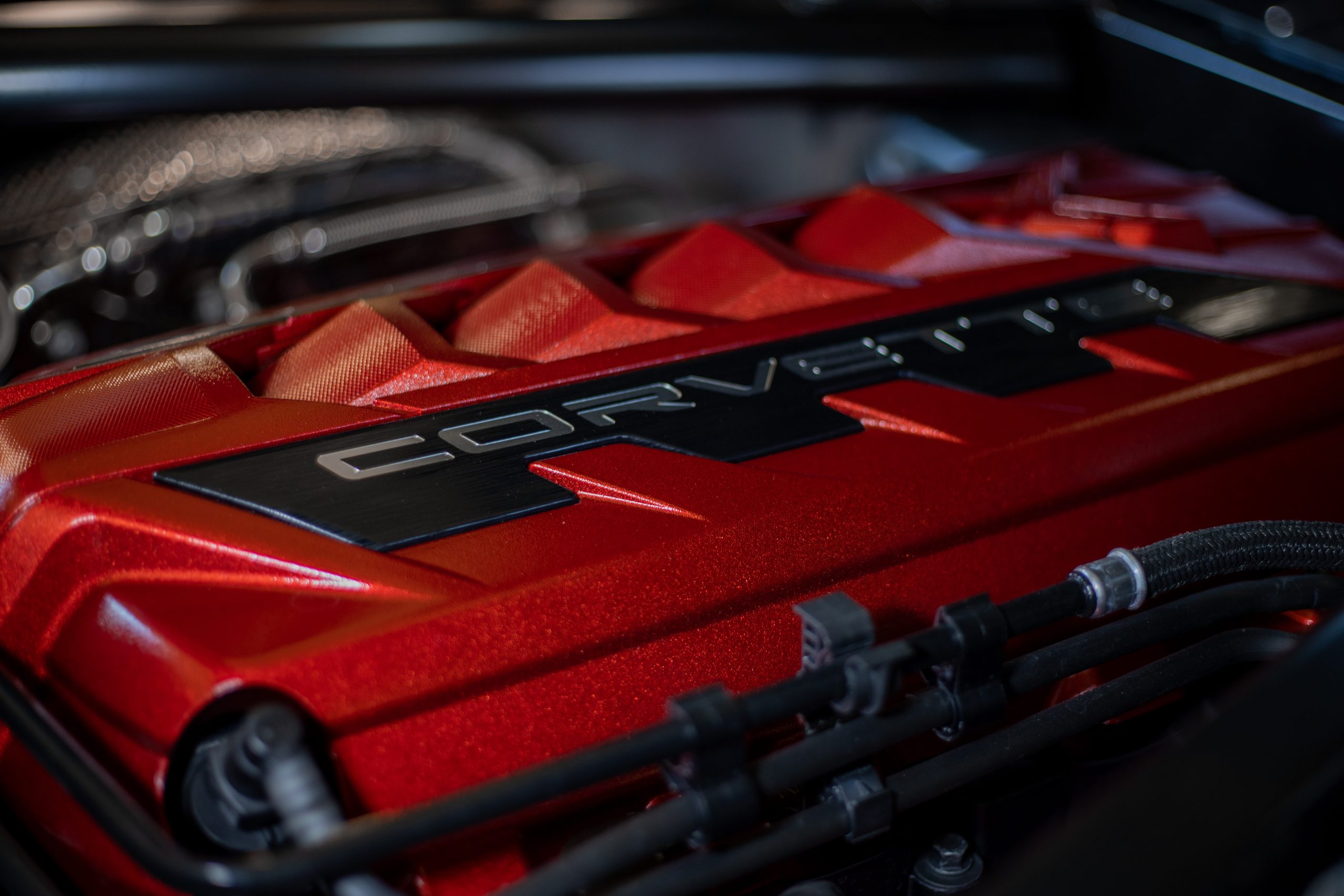C7 Corvette Stingray - “Performance Driven Function”
Research & Complete Reference Guide
Basics / The Story / Timeline / MY Research / MY Guides / Buyer's Guide / The Market / Vids & Pics / Latest / Tech Research
The C7: 2014 - 2019
On January 13, 2013, Chevrolet unveiled the all-new 2014 C7 Chevy Corvette Stingray at the Detroit Auto Show. The car, which had been kept carefully concealed by Chevrolet since their announcement that a seventh-generation Corvette was under development, was revealed to the world over a live internet feed. Working in coordination with Facebook, the popular media website YouTube hosted the event, which was viewed by more than 60,000 people worldwide.
The arrival of the C7 Corvette was the culmination of months of speculation by enthusiasts, car experts, critics, and countless fans, and was treated with more fanfare and pomp-and-circumstance than a Hollywood blockbuster movie debut.
Chevrolet remained tight-lipped about the new car throughout most of its development, though they did begin to release bits of information via a website that they developed that carried the web address “ONE13THIRTEEN.com”, which represented the date – January 13, 2013 – that the Corvette was to be unveiled. But even before the hype around the arrival of a new Corvette began to circulate the media airwaves, Chevrolet had already been several years in the planning of the development of their next-generation sports car.
Development of the seventh-generation Corvette began about a year after the introduction of the C6 model in 2005. Tom Peters, Chevrolet’s Design Director, who had designed the sixth-generation Corvette had been tasked with improving upon the design that had already been considered such a resounding success the world over by car enthusiasts and critics alike. Working in conjunction with Tadge Juechter, Corvette’s Chief Engineer, the pair were instructed to take Corvette “to the next step” by “producing a vehicle that could challenge and beat the best the Germans and Italians could throw at it.
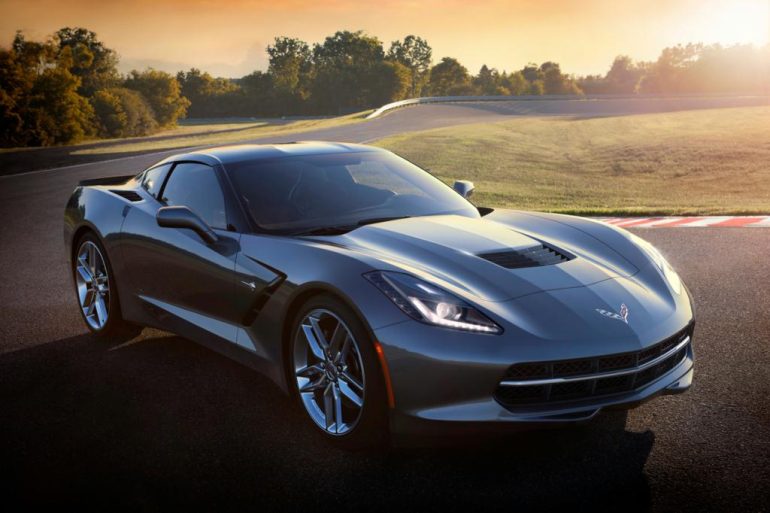
The C7 Corvette Story & Details
The task, which seemed overwhelming from the start, almost ended before it began. By late 2007, concerns – and serious doubts – began to arise about the continuation of the Corvette program. General Motors, like several American automotive manufacturers, were facing serious financial hardships, so much so that the project was halted for nearly six months because of GM’s financial problems.
As General Motors navigated the tumultuous financial “waters” over the next year, it seemed certain that the company was headed for bankruptcy and, along with it, Corvette was headed into non-existence. Fortunately, the government intervened, and General Motors was rescued from bankruptcy. Even so, much of its top brass were now very reserved about how money was to be spent. All budgets were examined closely, and research dollars were to be funneled into projects which presented the best opportunities for Chevrolet, and all of GM, to begin down a path of economic recovery. Although Juechter and Peters had been tasked with developing the ultimate sports car just a couple years earlier, it seemed as though that agenda had been swept away during those dark days when General Motors nearly disappeared.
In time, an agreement was made that the development of a next-generation Corvette should continue, but Peters and Juechter were directed to take a more conservative approach. Instead of building “the best sports car possible” as had been the edict prior to the near-bankruptcy, Peters was instead instructed to build an evolutionary design based on the C6 platform.
The C6 had already been recognized as the best Corvette ever in terms of pure performance and it shared roughly the same footprint as Corvette’s largest rival – the Porsche 911. While these aspects of the C6 were well respected, it was going to revolutionize Corvette in the way Peters (and others within the Corvette program) had hoped. General Motor’s Vice President of Global Design Ed Welburn intervened. He had learned of Tom Peters frustrations with the design challenges surrounding the C7 Corvette, and had sought Peters out with specific instruction that would change the direction of the next-generation Corvette’s development. “Ed was willing to listen” said Peters, “He told me to go back, keep working on the design I wanted and prove that I was right.”
With Welburn’s support behind him, Tom Peters forged ahead with his conceptual design of what the next-generation Corvette should look and feel like. The project’s delay during GM‘s bankruptcy actually benefited Peters, whose newest designs were well received by GM’s top brass, which led to the much sought after “go ahead” based on Peter’s newest designs.”
The result is that the 2014 C7 Corvette Stingray was truly a departure from its predecessor. In fact, it only shares two parts with the previous-generation Corvette – the removable roof release lever and a filter in the air filtration system. The rest is completely new – including the frame structure, chassis, powertrain, and an all-new interior and exterior design.
At its core, the C7 Corvette features an all-new 6.2 Liter LT1 V-8 engine. Development of the fifth-generation LT1 included more than 10 million hours of computational analysis, with more than 6 million hours alone spent on the combustion system.
The result is a small-block engine that produces an estimated 450 horsepower (335kW) and 450 lb.-ft. of torque (610 Nm). It also produces 50lb.-ft. more torque than the previous 6.2L engine, instead matching the low end output of the 7.0L LS7 engine used in the 2013 Z06 Corvette. The LT1 engine combines advanced technologies, including direct fuel injection, Active Fuel Management, continuously variable valve timing, and an advanced combustion system that delivers more power while using less fuel. In fact, during normal driving conditions, it is estimated that the new Corvette gets an approximate 26 miles per gallon (highway), thanks in part to the LT1’s ability to run in a fuel-saving V-4 mode while driving at cruising speeds.
The LT1 engine is backed by a choice of active exhaust systems that are less restrictive than the previous generation. This reduction in exhaust restriction was achieved by increasing the diameter of the pipes from 2.5 inches to 2.75 inches, which resulted in a 13-percent improvement in airflow through the standard system. Additionally, there is also an optional dual-mode active exhaust system which offers a 27-percent improvement in airflow. It features two additional valves that open to a lower-restriction path through the mufflers. When opened, these valves increase engine performance and produce a more powerful exhaust note.
The LT1 engine is paired to an industry-exclusive TREMEC TR 6070 seven-speed manual transmission (standard) with Active Rev Matching for more precise upshifts and downshifts. This driver-selectable feature can be easily engaged or disengaged via paddles on the steering wheel.
“Active Rev Matching makes the new Corvette easier and more fun to drive in performance conditions,” said Tadge Juechter, “It anticipates the next gear selection and electronically ‘blips’ the throttle to match engine speed for a seamless gear change.”
In addition to the standard seven-speed manual transmission, an optional six-speed Hydra-Matic 6L80 paddle-shift automatic is also available to consumers. It is optimized for use with the Active Fuel Management system and features a lower-inertial torque converter for improved shift quality and shift speeds. In addition, shift feel and shift points can be adjusted through the Driver Mode Selector – a five-position dial that tailors 12 vehicle attributes to fit the driver’s environment and produce one of several unique driving experiences.
The cockpit mounted Driver Mode Selector utilizes a rotary knob near the shifter that allows drivers to select between one of five drive settings: Weather, Eco, Tour, Sport, and Track. The Tour Mode is the default setting for everyday driving. The Weather Mode was designed primarily for added confidence while driving in rain and snow. The Eco Mode was developed for achieving optimal fuel economy. The Sport Mode was developed for drivers looking for a more adventurous, or “spirited” driving experience. The Track Mode was developed for a single reason – as it’s name implies – for running the car at a racetrack.
“The all-new Corvette Stingray is really three cars in one,” said Harlan Charles, Production Manager of the C7 Chevy Corvette. “It provides the comfort and functionality of a long-distance GT car, the connectedness and infotainment of a daily driver and the acceleration, grip and braking of a capable track car. With the Driver Mode Selector, we wanted to give the driver an easy way to tailor virtually every aspect of the car to fit their driving environment. The result is a more rewarding, more confident experience, whether you’re commuting in a downpour or charging through the corkscrew at Laguna Seca.”
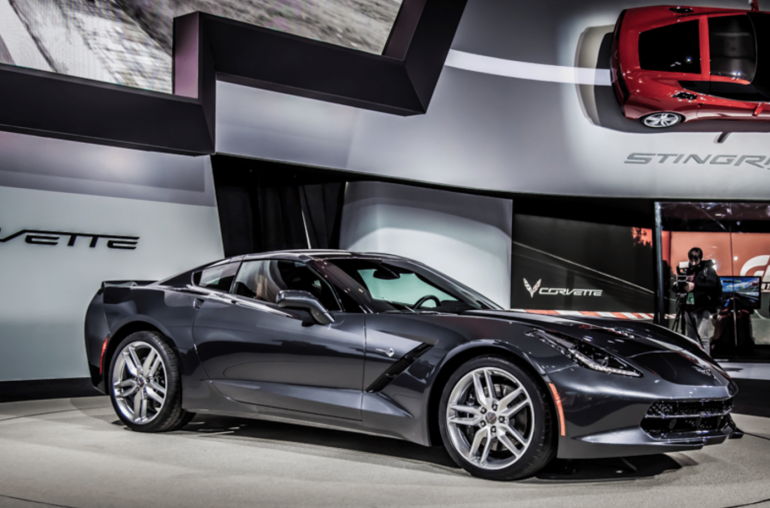 The 2014 C7 Corvette Stingray just after to its unveiling at the Detroit Auto Show – January 13, 2013
The 2014 C7 Corvette Stingray just after to its unveiling at the Detroit Auto Show – January 13, 2013 Tom Peters, Chevrolet Director of Rear Wheel Design (Image courtesy of GM Media.)
Tom Peters, Chevrolet Director of Rear Wheel Design (Image courtesy of GM Media.)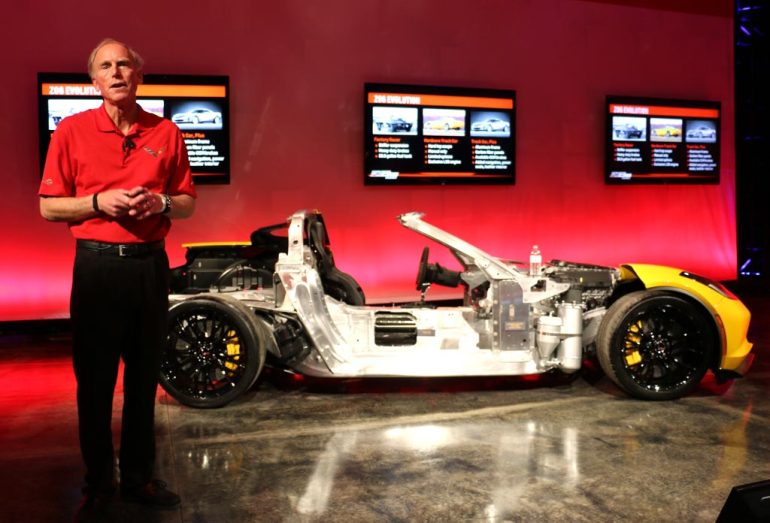 Tadge Juechter, Corvette’s Chief Engineer. (Image courtesy of GM Media.)
Tadge Juechter, Corvette’s Chief Engineer. (Image courtesy of GM Media.)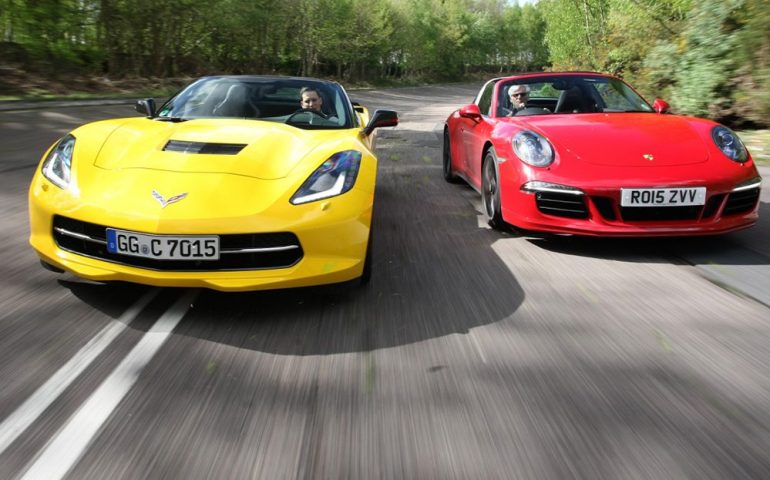 The Porsche 911 has always been recognized as one of Corvette’s staunchest – and longest standing – rivals. It has also served as a basis by which Corvette’s design is measured – both on and off the race track.
The Porsche 911 has always been recognized as one of Corvette’s staunchest – and longest standing – rivals. It has also served as a basis by which Corvette’s design is measured – both on and off the race track. Ed Welburn, General Motors Vice President of Global Design. (Image courtesy of GM Media.)
Ed Welburn, General Motors Vice President of Global Design. (Image courtesy of GM Media.)Ed was willing to listen... He told me to go back, keep working on the design I wanted and prove that I was right.”
Tom Peters
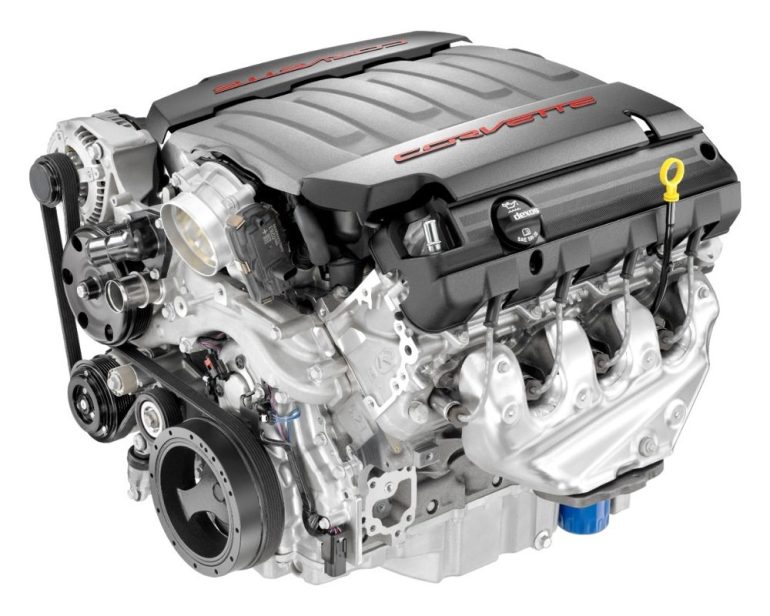 The All-New Gen V Small-Block, 6.2L LT1 V-8 Engine. Image courtesy of GM Media.)
The All-New Gen V Small-Block, 6.2L LT1 V-8 Engine. Image courtesy of GM Media.)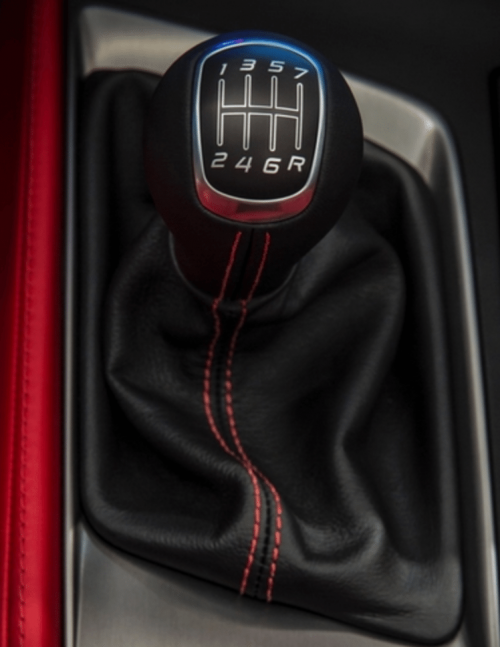 The TREMEC TR6070 seven-speed manual transmission comes standard with the 2014 Chevy Corvette. (Image courtesy of GM Media.)
The TREMEC TR6070 seven-speed manual transmission comes standard with the 2014 Chevy Corvette. (Image courtesy of GM Media.)
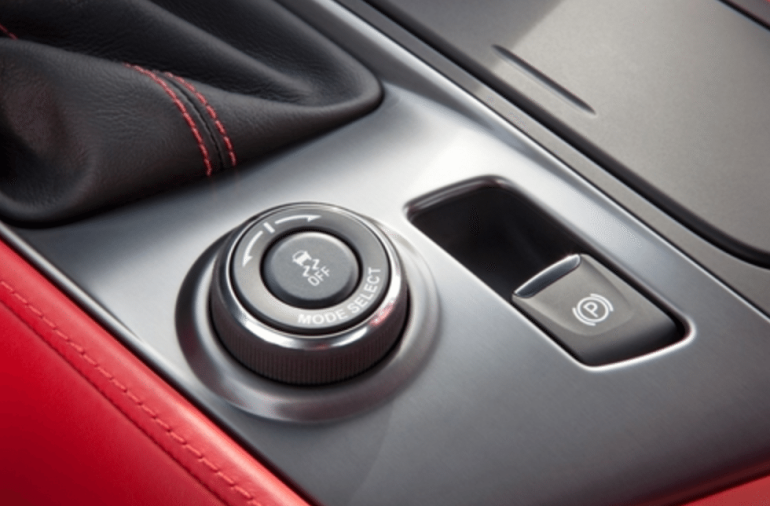 The 2014 Corvette’s Driver Mode Selector lets drivers select from one of five driving modes: Weather, Eco, Tour, Sport, and Track. (Image courtesy of GM Media.)
The 2014 Corvette’s Driver Mode Selector lets drivers select from one of five driving modes: Weather, Eco, Tour, Sport, and Track. (Image courtesy of GM Media.)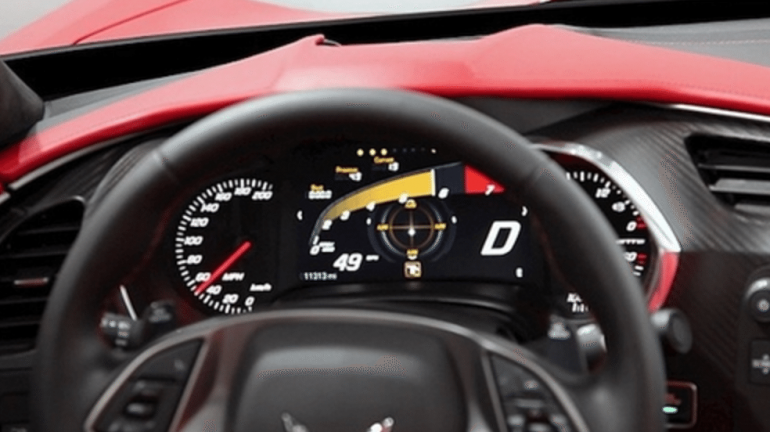 The 2014 Corvette Instrument Cluster features one of two 8-inch display screens that provide drivers a variety of feedback during vehicle operation. (Image courtesy of GM Media.)
The 2014 Corvette Instrument Cluster features one of two 8-inch display screens that provide drivers a variety of feedback during vehicle operation. (Image courtesy of GM Media.)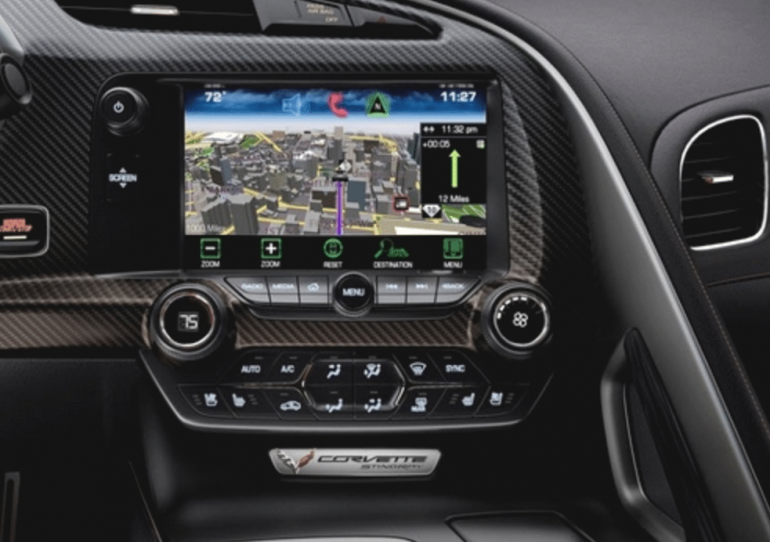 The center console of the 2014 Corvette features an 8-inch display that serves as an interface for the car stereo, MP3 player, GPS, and other media. It features an interactive touch screen with gesture recognition technology. (Image courtesy of GM Media.)
The center console of the 2014 Corvette features an 8-inch display that serves as an interface for the car stereo, MP3 player, GPS, and other media. It features an interactive touch screen with gesture recognition technology. (Image courtesy of GM Media.)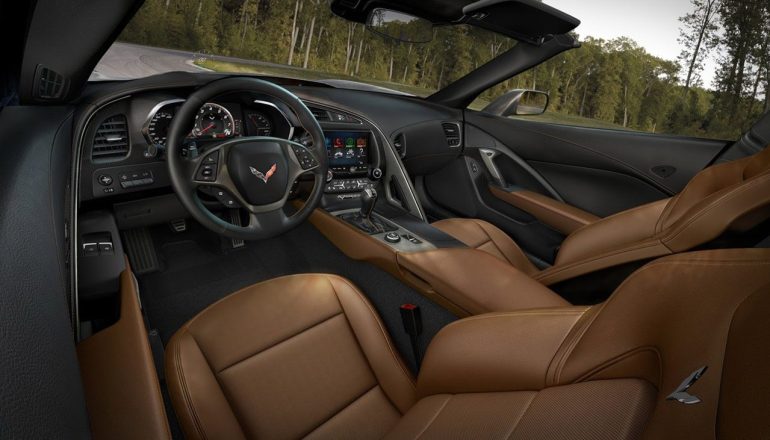 The 2014 C7 Corvette Stingray Interior. (Image courtesy of GM Media.)
The 2014 C7 Corvette Stingray Interior. (Image courtesy of GM Media.)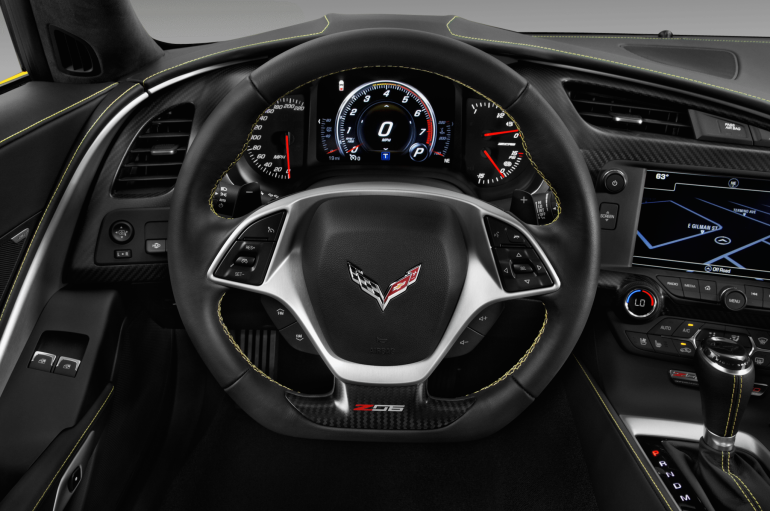 The C7 Corvette Stingray features a smaller, 14.1 inch-diameter steering wheel. (Image courtesy of GM Media.)
The C7 Corvette Stingray features a smaller, 14.1 inch-diameter steering wheel. (Image courtesy of GM Media.)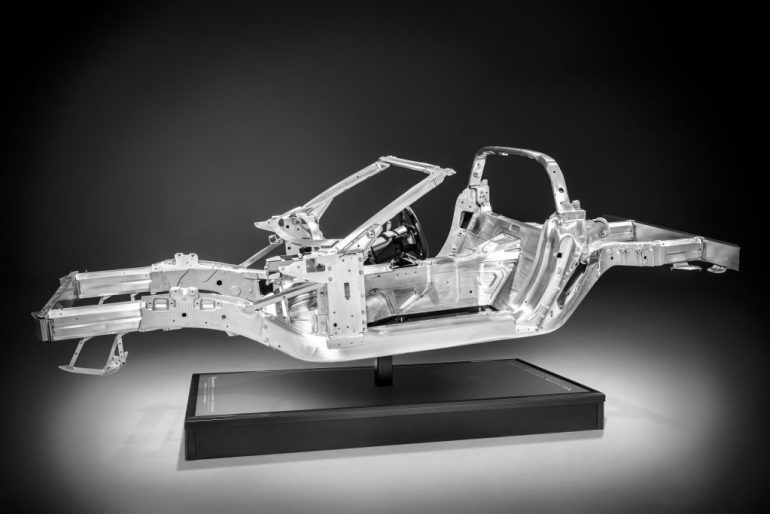 The all-new aluminum frame was intentionally designed to help shift the car’s weight rearward to achieve an optimal 50/50 weight balance from front to rear axles. (Image courtesy of GM Media.)
The all-new aluminum frame was intentionally designed to help shift the car’s weight rearward to achieve an optimal 50/50 weight balance from front to rear axles. (Image courtesy of GM Media.)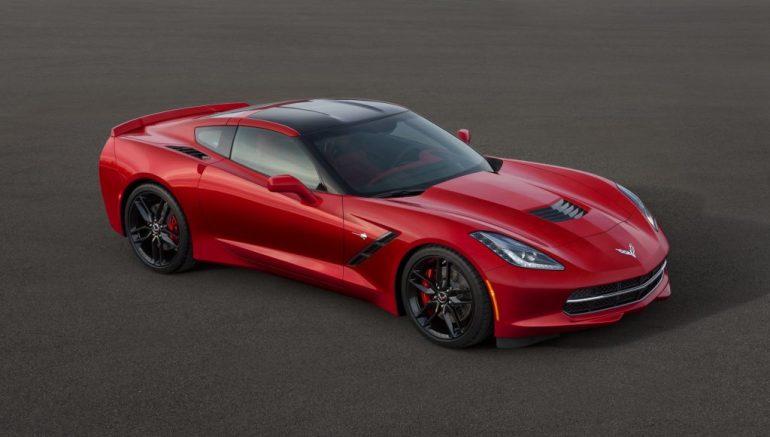 The new C7 Corvette Stingray. “Beautiful form follows performance driven function” -Kirk Bennion, Exterior Design Manager (Image courtesy of GM Media.)
The new C7 Corvette Stingray. “Beautiful form follows performance driven function” -Kirk Bennion, Exterior Design Manager (Image courtesy of GM Media.)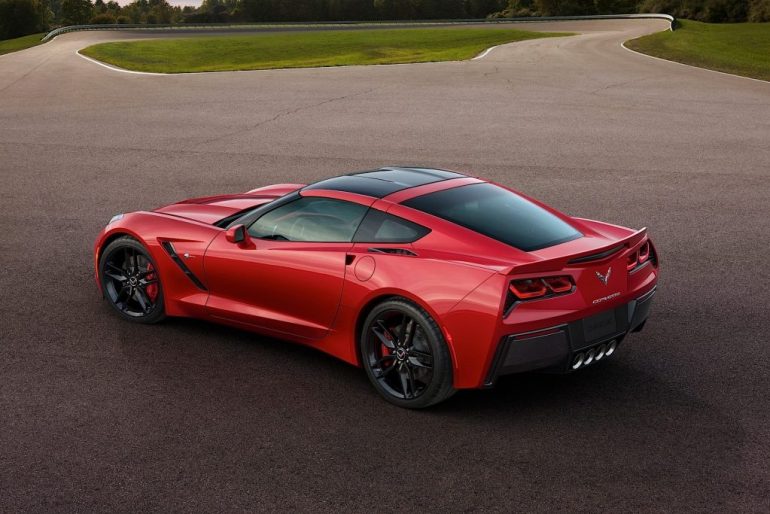 The Brand New C7 2014 Corvette Stingray
The Brand New C7 2014 Corvette Stingray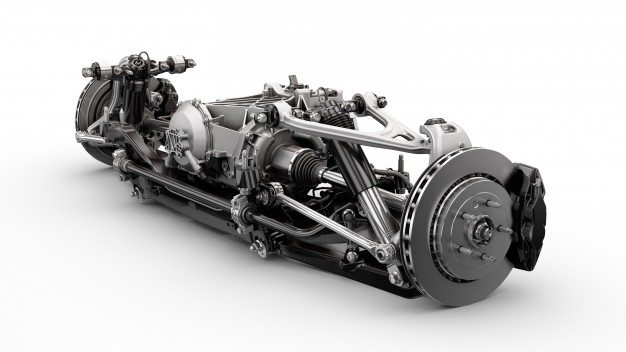 The 2014 Corvette Stingray’s Front and rear axle and suspension assemblies include Bilstein Monotube Shocks. (Images courtesy of GM Media.)
The 2014 Corvette Stingray’s Front and rear axle and suspension assemblies include Bilstein Monotube Shocks. (Images courtesy of GM Media.)
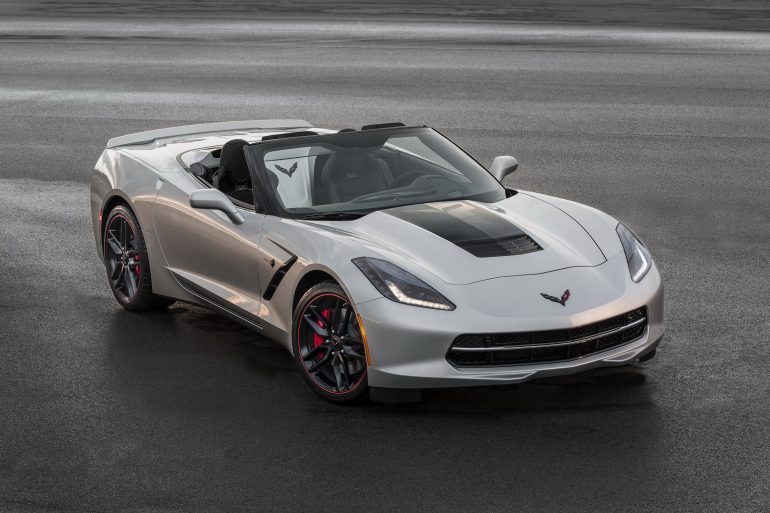 Offered on 2016 Corvette Stingray and Z06, the Jet Black Suede Design Package features a unique Jet Black sueded microfiber interior, including a microfiber-trimmed steering wheel and shifter, and additional carbon fiber trim.
Offered on 2016 Corvette Stingray and Z06, the Jet Black Suede Design Package features a unique Jet Black sueded microfiber interior, including a microfiber-trimmed steering wheel and shifter, and additional carbon fiber trim.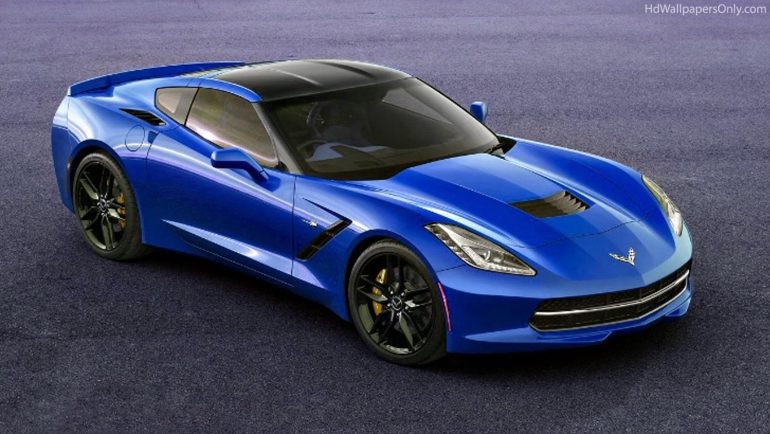
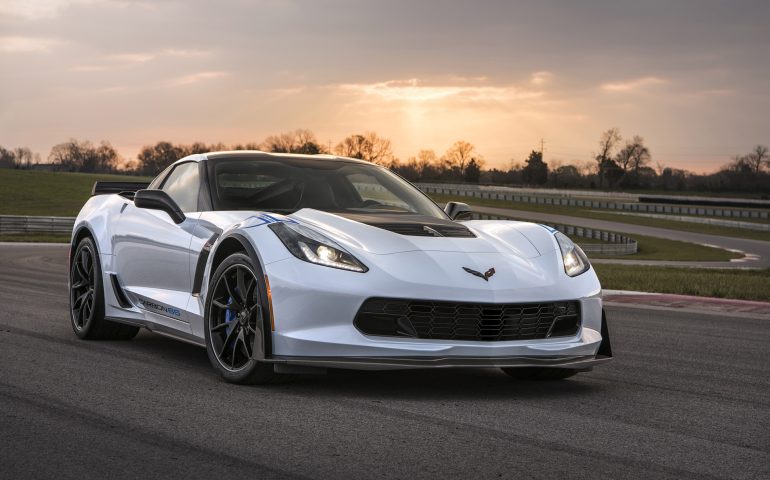
C7 Corvette Development
While this new level of driver control was designed to enhance the overall driving experience, so too was the re-design of the C7’s cockpit and interior. To start, the new Corvette Stingray features a total of three configurable displays, including a pair of eight-inch screens and a color heads-up display, all of which deliver personalized information and convey feedback of the different performance parameters as the Corvette operates in each driving mode. The two eight-inch screens were designed to offer excellent driver visibility, even in direct sunlight.
The first of these displays is integrated into the instrument cluster, and has a brightness of 650 cd/m2. The second, more centrally located in the center stack above the climate/temperature controls, offers 1,000 cd/m2 of brightness, making it one of the brightest screens in the industry. The second screen actually serves as a media interface for occupants of the Corvette, allowing driver and passenger to control radio, CD, MP3, and other features via an interactive touch screen with gesture recognition technology. It can be lowered to reveal a hidden storage area that includes a USB input for device charging or uploads. However, since Corvette is first and foremost a sports car, and not the typical family van with built in video player, some concessions to the built in “media center” were made to ensure that drivers keep their focus on the road.
“Early in the development process, we spent time on the track, driving Corvette hard. That experience shaped many parts of the interior, such as the instrument display in Track Mode,” said Ryan Vaughn, Interior Design Manager of the C7 Corvette. “At 120 miles per hour, you experience a sort of tunnel vision, as you concentrate on the next turn. At that moment, you don’t need to know the next song playing on the radio.”
Beyond the instrument cluster, the entire interior of the C7 Corvette received a new treatment, which, like the rest of the car, was truly designed with the driver in mind.
“Every feature and detail in the interior is designed to enhance the driver’s connection to the Corvette” said Helen Emsley, Interior Design Director for Corvette. “It start(ed) with the fighter jet inspired wrap around cockpit; continues to build with the smaller steering wheel, more supportive seats, and high-definition, configurable screens, and is finished in gorgeous details.”
The new interior blends some of the finest materials together including real carbon fiber, aluminum, and hand-wrapped leather materials. It also features two new seat choices, each of which features a lightweight magnesium frame which offers both the driver and passenger exceptional support, even under the most rigorous driving conditions. To help satisfy the varying demands of C7 owners, two seating choices were developed and offered when purchasing a new Corvette. The first was a GT seat for all-around driving comfort. The second was a Competition seat with more aggressive side bolstering which ultimately provides greater driving support at the track. The seats are finished in an available Napa leather trim that features precise and elegant stitching.
A smaller, 14.1-inch-diameter (360 mm) steering wheel fosters a more direct and immediate interaction with the directional control of the Corvette. The steering wheel is finished in wrapped leather, and, like the seats, features a flat, precise stitching used during the assembly of the steering wheel’s leather covering. Additional performance-enhancing details within the interior of the new-Corvette include a steel-reinforced grab bar on the center console for the passenger, and soft-touch materials on the edge of the console where the driver naturally braces during high-load cornering.
Balancing the performance-based elements, the design of the new Corvette Stingray’s cockpit exudes an unprecedented level of detail and build quality, including details like a sweeping arch motif over the driver cockpit trim, and a seamless transition of the line from the instrument panel to the door. All models will features a fully-wrapped interior, with every surface covered in premium, soft-touch materials including Napa leather, aluminum, carbon-fiber and micro-suede. These materials were painstaking integrated into the interior build through a mix of hand craftsmanship and machined precision, ensuring that all parts of the new Corvette interior exhibit an unparalleled quality over anything previously seen. For example, the leather-wrapped instrument panel feature hand-selected and hand-stretched materials for better grain matching with stitching performed by robots that deliver perfect seams.
To ensure the high quality of the interior, we spent time working on the line alongside the team that builds the Corvette every day at (the) Bowling Green Assembly Plant,” said Ryan Vaughan, interior design manager. “And thanks to that collaboration between design, engineering and manufacturing, we were able to make adjustments that allowed us to maintain the integrity of the design, improve the assembly process and ultimately deliver what we believe to be a world-class interior.”
Although the intent of the Corvette is to provide drivers with the ultimate driving experience, the experience is not limited solely to on-track level performance. For those looking for those “creature comforts” that enhance the driving experience, the new C7 Stingray provides a broad assortment of extras including and advanced infotainment system which features Chevrolet MyLink and a high-definition radio.
A premium 10-speaker audio system (which includes a bass box and two sub-woofers) that features speakers with rare-earth magnets (designed to deliver greater sound quality with reduced weight and size) is available. Additionally, a USB port in the center console, a stand-alone audio input jack and as SD card slot provide seamless connectivity for MP3 and other media players. Elsewhere, the Corvette also includes an enhanced OnStar system with 3D navigation maps. Even the climate control interface has been re-designed, and now features a micro LED interface that allows both driver and passenger to adjust cockpit temperature.
Outside the cockpit, the C7 Stingray’s exterior exudes the same level of craftsmanship and quality as the interior. To start, all of Corvette’s body panels were carefully evaluated, and it was decided that the C7 would feature a carbon-fiber hood and removable roof panel, composite fenders, doors and rear quarter panels, and carbon-nano composite underbody panels. The fenders, doors, rear quarter panels and the rear hatch panel are made with a lighter-density Sheet Molded Compound than the previous generation Corvette, which was chosen both for its rigidity and its lighter weight. Combined, these materials save approximately 37 pounds (17 kg) versus the previous body structure. At its core, the C7 also features an entirely new aluminum frame which was intentionally designed to help shift the car’s weight rearward to achieve an optimal 50/50 weight balance from front to rear axles. This carefully configured design helps support a world-class power-to-weight ratio.
Development of a new Corvette chassis meant the development of new manufacturing standards. While the previous generation Corvette utilized continuous hydroformed main frame rails with a constant 2mm wall thickness, the Stingray’s frame features mail rails that are composed of five customized aluminum segments, including aluminum extrusions at each end, a center main rail section and hollow-cast nodes at the suspension interface points. Each segment is tuned – varying in thickness from 2mm to 11mm – tailoring the gauge, shape, and strength properties to optimize the requirements for each frame section with minimal weight.
Supporting the new frame’s greater strength and lower weight are complementing chassis elements, which include hollow-cast aluminum front and rear cradles that are approximately 25-percent lighter and 20-percent stiffer than the solid cradles used on the previous Corvette. The frame, and all corresponding sub-assemblies, will be assembled at an all-new welding shop at the Bowling Green Assembly Plant. The frame will be manufactured using a unique laser welding process in which a computer-controlled beam of high energy joins the components with exceptional precision and tolerances of about 0.001-inch.
“Developing a new Corvette, while every designer’s dream, is not an easy task,” said Ken Parkinson, Executive Director of Global Design. “The goal was a bold design statement that embraced the advanced technology of the car, while enhancing its overall performance in everything from the wind tunnel to the track. The result is a new Corvette Stingray – a fantastic car that breaks new ground yet remains true to the fundamental elements that make a Corvette a Corvette.”
“For the new Corvette to be called a Stingray, it had to deliver an incredible, purposeful visual impact – just as the original did in 1963,” said Tom Peters. “That visual impact is evident in fighter jets and the Stingray animal itself. Their beauty comes from their purpose, designed to cut through air or water as quickly and efficiently as possible. As with aircraft and living forms, every transition on every surface of the Corvette Stingray serves a purpose executed with beauty and proportion.”
While no single detail was repeated from previous generations of Corvette, the new Stingray does include a distinctive profile that is immediately identifiable as a Corvette. In developing the design of the exterior, Peters and his team turned to two very different sources for their inspiration: aerospace and nature. With respect to the aerospace ques, the new Corvette design draws inspiration from some of the latest military aircraft profiles, which is fitting since Harley Earl did the very same thing when designing the original Corvette in the early 1950’s.
Of course, aerodynamics played a fundamental role in the development of the new Corvette Stingray. Advanced computer-aided modeling programs were utilized to analyze airflow over, under and through the new Corvette’s body. Additionally, engineers and designers utilized data obtained from the Corvette Racing program to help balance front to rear grip for high-speed stability.
Throughout its design, many hours were spent in a wind-tunnel hand-sculpting surfaces of the Corvette for both aesthetics and performance. As stated by Kirk Bennion, Exterior Design Manager for the C7 Corvette “Performance cars are definitely all about form follows function, but I would say beautiful form follows performance driven function.” This statement proved true time and again for the C7, for there were many design elements that evolved as their functionality was refined. Some of these functional design elements include: a new grille/radiator arrangement and hood vents which allows air to vent out of the hood which, in turn, reduces front-end lift for improved steering response at high speeds; front fender side coves that help vent underhood air pressure to reduce aerodynamic drag; airflow through the differential and transmission heat exchangers was redirected to exit through the aircraft-inspired tail-lamp vents and lower-rear fascia air outlets; Corvette models equipped with an automatic transmission or the Z51 Performance Package feature a functional vent on the driver’s side directing air over a heat exchanger for the transmission fluid and a similar arrangement of the passenger side that directs air.
Dimensionally, the new Corvette’s wheelbase is approximately an inch longer than the previous generation, while the front and rear tracks are almost an inch wider. This design change was implemented to provide a more stable feel, particularly when operating at high speeds. In contrast, the turning radius was decreased by approximately two feet, which gives the new Corvette greater maneuverability in tight turns.
“An important goal for the seventh-generation Corvette was to create a more intimate and connected driving experience, said Mike Bailey, Chassis Vehicle System Engineer. “Whether on the open road or on the track, we wanted drivers to feel comfortable and confident behind the wheel.”
The C7 retains the racing-proven short/long-arm suspension design developed on the C6, the components that make up that design are new. Improvements to the suspension include hollow lower control arms which save approximately 9 pounds (4 kg) per vehicle and new aluminum rear toe links which save 2.4 pounds (1.1 kg) over the previous steel links.
It also features standard 35mm-piston Bilstein monotube shocks which connect to dual-path aluminum shock mounts that separate the shock rod and shock body load paths. For C7 Corvettes equipped with the Z51 Performance Package, it will be set up with 45-mm piston Bilstein dampers for more aggressive body control and track capability. The Z51 is available with the third-generation Magnetic Ride Control, which features a new twin-wire/dual-coil damper system that react 40 percent more efficiently, enabling improved ride comfort and body control.
The Corvette Stingray now rides on new 18x 8.5-inch front and 19 x 10-inch rear wheels. New Michelin Pilot Super Sport run-flat tires, which were developed specifically for the seventh-generation Corvette. These tires deliver comparable levels of grip with the previous generation of Corvette, despite having a narrow profile than their predecessors. Given the reduced “footprint”, the track-oriented Corvette Stingray, when equipped with the Z51 Performance Package, is capable of 1g in cornering acceleration – which is comparable to the performance of the 2013 Corvette Grand Sport. Additionally, the new tires reduce rolling resistance, steering effort and road nice, resulting in a more nimble feel, and more immediate steering response – which also translates into greater touring comfort and efficiency.
Another new aspect of the Corvette Stringray’s design is the lighting package that was developed for it. At the front of the car, high-intensity discharge headlamps are complimented by frosted light-emitting-diode daylight LED lamps. Both the HID projector headlamps and LED daytime running lights are set in a black-chrome lamp housing. The new design was carefully sculpted as part of the exterior to achieve race-proven aerodynamics that balance low drag with optimal road illumination in a variety of driving conditions. Additionally, the turn signals feature edge-lit amber LED lighting.
At the rear of the car are all-new, dual-element taillamps. This entirely new design is the greatest variance from the traditional taillight design that has so long been a part of the Corvette’s tradition. While every generation of Corvette has featured a round taillight lens (either projecting from the rear fascia, or recessed into it, the new Corvette’s taillight assembly feature a squared-off design that has been compared to the taillights on the new Chevy Camaro (an observation that may be accurate given that Tom Peters, the man chiefly responsible for the design of the new Camaro also oversaw the development of the C7 Corvette.)
The new Corvette’s taillight assembly feature three-dimensional, sculpted lenses which house innovative indirect LED lighting. The design incorporates the use of hidden LED lamps that cast their light up from the bottom of the housing into a reverse reflector, creating an even glow. LED lamps were also utilized for the backup lamp assembly, providing improved illumination over a conventional bulb assembly. The taillamps integrate functional aircraft-style air outlets for the available differential and transmission coolers.
“From the front or rear, the signature lighting brings the new Corvette to life,” said Peters. “It looks beautiful, sinister and more than a little intimidating. It gives the Corvette a nighttime appearance unlike anything else on the street.”
“Every square inch of the 2014 Corvette’s exterior is designed to enhance high-performance driving,” said Kirk Bennion. “The team delivered a great balance of low drag for efficiency and performance elements for improved stability and track capability – all in a sculpted design that excites in all the ways that a Corvette has for six decades.”
“Like the ’63 Sting Ray, the best Corvettes embodied performance leadership, delivering cutting-edge technologies, breathtaking design and awe-inspiring driving experiences,” said General Motors North America President Mark Reuss. “The all-new Corvette goes farther than ever, thanks to today’s advancements in design, technology and engineering.”
“Stingray is one of the hallowed names in automotive history,” said Ed Welburn, GM vice president of global design. “We knew we couldn’t use the Stingray name unless the new car truly lived up to the legacy. The result is a new Corvette Stingray that breaks from tradition, while remaining instantly recognizable as a Corvette the world over.”
“We believe the Corvette represents the future of modern performance cars because it delivers more power, more driving excitement and better fuel efficiency,” says Juechter. “The result is better performance by every measure. The 2014 Corvette delivers the fastest acceleration, the most cornering grip, the most track capability, the best braking performance and what we expect to be the best fuel economy ever for a standard Corvette.” The new Corvette Stingray will be built at GM’s Bowling Green, Ky., assembly plant, which underwent a $131-million upgrade, including approximately $52 million for a new body shop to manufacture the aluminum frame in-house for the first time.
The C7 Corvette Market - Sales & Auctions
C7 Corvettes for Sale. This is our C7 Corvette auction and sales area. We share upcoming auctions, recent auction results, cool C7 Corvettes we find for sale and commentary on the current market for C7 Corvettes.
C7 Corvette Videos, Pictures & Wallpapers
Check out our stunning library of C7 Corvette videos and images. Thousands to enjoy.
The C7 Corvette Newsfeed
Get all the latest news stories, upcoming auctions, cool cars for sale, prices, videos and more about the C7 Chevrolet Corvette! The latest headlines here.
C7 Corvette Technical Research
Production and sales numbers, order guides and sales brochures, we have more C7 Corvette research than you could ever want.
C7 Production
Ever wanted to know just how many C7 Corvettes were made? We have you covered.


